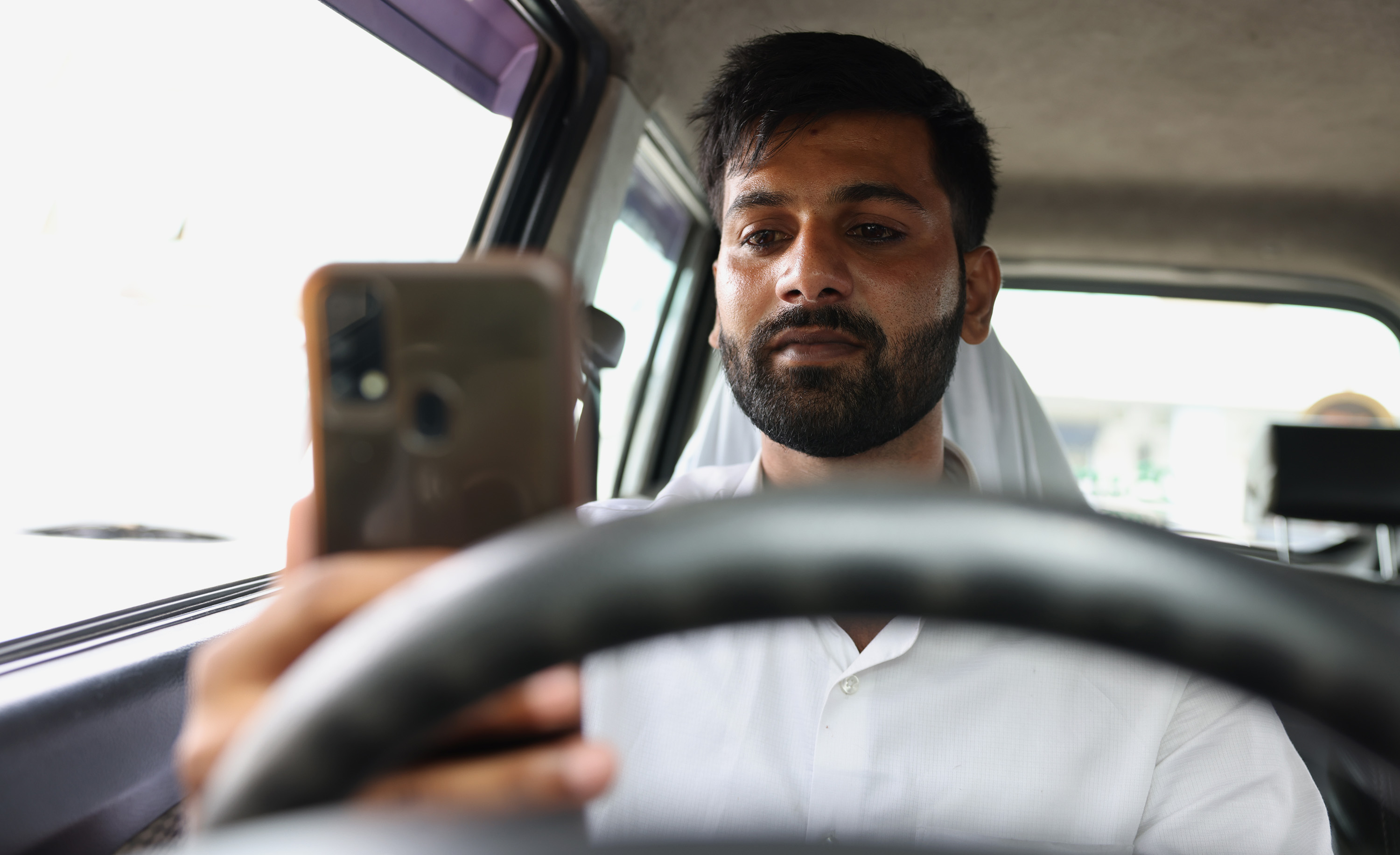[ad_1]
Uber checks that a driver’s face matches what the company has on file through a program called “Real-Time ID Check.” It was rolled out in the US in 2016, in India in 2017, and then in other markets. “This prevents fraud and protects drivers’ accounts from being compromised. It also protects riders by building another layer of accountability into the app to ensure the right person is behind the wheel,” Joe Sullivan, Uber’s chief security officer, said in a statement in 2017.
But the company’s driver verification procedures are far from seamless. Adnan Taqi, an Uber driver in Mumbai, ran into trouble with it when the app prompted him to take a selfie around dusk. He was locked out for 48 hours, a big dent in his work schedule—he says he drives 18 hours straight, sometimes as much as 24 hours, to be able to make a living. Days later, he took a selfie that locked him out of his account again, this time for a whole week. That time, Taqi suspects, it came down to hair: “I hadn’t shaved for a few days and my hair had also grown out a bit,” he says.
More than a dozen drivers interviewed for this story detailed instances of having to find better lighting to avoid being locked out of their Uber accounts. “Whenever Uber asks for a selfie in the evenings or at night, I’ve had to pull over and go under a streetlight to click a clear picture—otherwise there are chances of getting rejected,” said Santosh Kumar, an Uber driver from Hyderabad.
Others have struggled with scratches on their cameras and low-budget smartphones. The problem isn’t unique to Uber. Drivers with Ola, which is backed by SoftBank, face similar issues.
Some of these struggles can be explained by natural limitations in face recognition technology. The software starts by converting your face into a set of points, explains Jernej Kavka, an independent technology consultant with access to Microsoft’s Face API, which is what Uber uses to power Real-Time ID Check.

SELVAPRAKASH LAKSHMANAN
“With excessive facial hair, the points change and it may not recognize where the chin is,” Kavka says. The same thing happens when there is low lighting or the phone’s camera doesn’t have a good contrast. “This makes it difficult for the computer to detect edges,” he explains.
But the software may be especially brittle in India. In December 2021, tech policy researchers Smriti Parsheera (a fellow with the CyberBRICS project) and Gaurav Jain (an economist with the International Finance Corporation) posted a preprint paper that audited four commercial facial processing tools—Amazon’s Rekognition, Microsoft Azure’s Face, Face++, and FaceX—for their performance on Indian faces. When the software was applied to a database of 32,184 election candidates, Microsoft’s Face failed to even detect the presence of a face in more than 1,000 images, throwing an error rate of more than 3%—the worst among the four.
It could be that the Uber app is failing drivers because its software was not trained on a diverse range of Indian faces, Parsheera says. But she says there may be other issues at play as well. “There could be a number of other contributing factors like lighting, angle, effects of aging, etc.,” she explained in writing. “But the lack of transparency surrounding the use of such systems makes it hard to provide a more concrete explanation.”
[ad_2]
Source link

